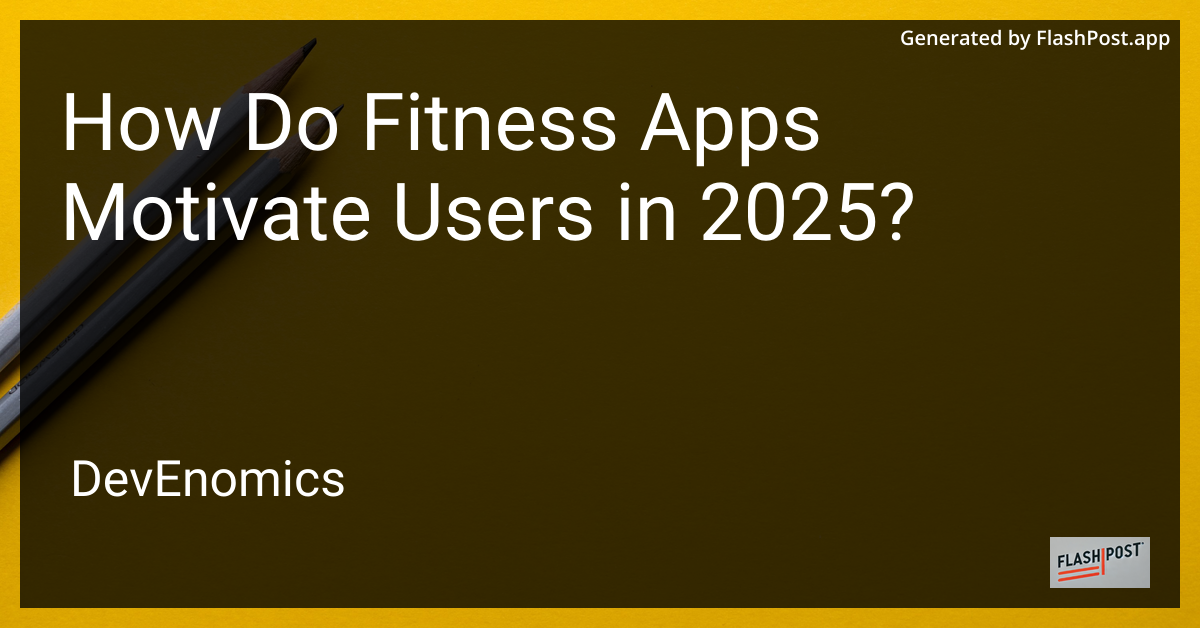

How Do Fitness Apps Motivate Users in 2025?
In the fast-paced world of 2025, fitness apps are revolutionizing how users stay motivated and achieve their health goals. By leveraging advanced technologies and personalized features, these apps have become indispensable tools for fitness enthusiasts. Let’s explore the innovative strategies fitness apps use to keep users engaged and motivated.
Personalized Fitness Plans
One of the key strategies fitness apps use to motivate users is by offering personalized fitness plans. These plans are tailored to individual preferences, goals, and fitness levels. By analyzing data from past workouts and user input, apps provide a bespoke exercise regimen that maximizes results and keeps users motivated.
Gamification Elements
In 2025, gamification has taken a front seat in fitness app development. By incorporating game-like features such as challenges, rewards, and leaderboards, apps turn workouts into engaging experiences. Users can earn badges for completing tasks, compete with friends, and even unlock new levels of workouts, making the fitness journey fun and rewarding.
Integration with Wearables
With the rise of top fitness wearables, fitness apps in 2025 seamlessly integrate with devices like smartwatches and fitness trackers. This integration provides users with real-time feedback on their physical activity, heart rate, and even sleep patterns. Such insights enable users to track their progress and maintain motivation by seeing tangible improvements over time. Learn more about how fitness trackers work here.
Community Engagement
Community engagement is a powerful motivator. Fitness apps in 2025 create vibrant communities where users can connect, share experiences, and encourage each other. Whether through group challenges, forums, or social media integration, having a support system fosters a sense of belonging and pushes users to stay committed to their goals.
AI-Driven Coaching
Artificial Intelligence (AI) plays a significant role in motivating users by offering intelligent coaching and feedback. With AI-driven insights, users receive personalized advice on optimizing their workouts, nutrition tips tailored to their body type, and even recommendations for recovery. For instance, learning about top protein cereals for fitness can help users enhance their dietary habits.
Virtual Reality Workouts
Virtual Reality (VR) has brought a new dimension to home fitness. By immersing users in a virtual environment, fitness apps provide an engaging workout experience that simulates real-life scenarios. From virtual cycling among picturesque landscapes to interactive yoga sessions on a beach, VR makes workouts exciting and motivates users to explore new routines.
Data-Driven Goal Setting
In 2025, fitness apps utilize data analytics to help users set realistic and attainable fitness goals. By tracking progress and highlighting areas for improvement, apps provide a clear path to success. Users can visualize their journey, celebrate milestones, and stay motivated by understanding how each step contributes to their ultimate goals.
Conclusion
As technology continues to evolve, fitness apps in 2025 have become powerful motivators in the journey towards health and wellness. Through personalized experiences, community support, and integration with cutting-edge wearables, these apps ensure users remain committed to their fitness goals. Embrace the future of fitness by leveraging the innovative features that modern apps have to offer.
Stay ahead of the curve, and make the most out of your fitness journey with the help of these advanced digital tools!
